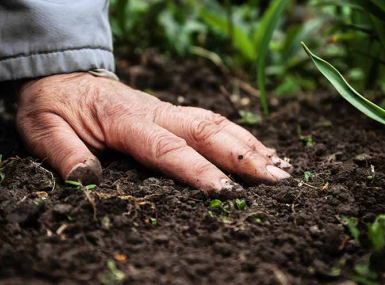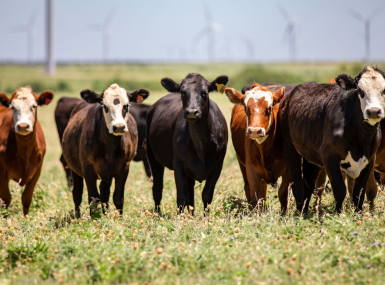Competing frameworks emerge for 2024 Farm Bill as counties secure key wins
Author

Owen Hart
Upcoming Events
Related News

Key Takeaways
After months of negotiations and gridlock, lawmakers on the House and Senate Agriculture Committees have released competing frameworks for the 2024 Farm Bill. The $1.5 trillion legislative package authorizes a suite of programs that help counties make critical investments in infrastructure, economic development, workforce training, nutrition and conservation within some of our nation's most underserved communities. To learn more about the Farm Bill and how it impacts counties, check out NACo's Primer for Counties: 2024 Farm Bill Reauthorization here.
On May 1, House Agriculture Committee Chairman G.T. Thompson (R-Penn.) released a summary of his proposal for the 2024 Farm Bill. This was followed by the release of the full bill text on May 17. The 942-page bill has been titled the "Farm, Food, and National Security Act of 2024." For more information on the bill's contents, please find a section-by-section summary and full bill text here. The House Agriculture Committee held a markup of the Farm, Food, and National Security Act of 2024 on May 24. During the markup, the Committee advanced the proposed legislation 33-21, including four Democratic votes in favor of the bill.
Senate Agriculture Committee Chair Debbie Stabenow (D-Mich.), responded to Chairman Thompson's Farm Bill proposal with a competing framework for the 2024 Farm Bill Reauthorization, dubbed the "Rural Prosperity and Food Security Act." For more information on the Senate proposal, please find a full summary of the bill here and a more detailed section-by-section summary here.
On June 10, Senate Agriculture Committee Republicans released their own framework for the 2024 Farm Bill, intended to kickstart negotiations over a prospective bipartisan Farm Bill package with their Democratic counterparts. The minority framework can be found here.
Thanks to NACo's advocacy efforts, both proposals include key wins for county governments, including increased funding for rural development programs, certain improvements to federal nutrition programs, more robust support for new and beginning farmers, the expansion of key land management authorities to county governments and in the House version, a three-year reauthorization of the Secure Rural Schools program, or SRS.
Though the House Agriculture Committee successfully advanced the Farm, Food, and National Security Act of 2024, it is unclear when the measure will go to the House floor for consideration before the full chamber. Meanwhile, Senate Agriculture Committee Chair Debbie Stabenow has yet to announce her plans to formally introduce and mark up her version of the 2024 Farm Bill.
Lawmakers have a long road ahead before the Farm Bill can be passed into law and several obstacles may continue to impede progress toward agreement on a bipartisan 2024 Farm Bill, including:
- Slim margins in the House and Senate
- Ongoing partisan disagreement over conservation and nutrition funding
- The upcoming 2024 election cycle, which is projected to dampen legislative activity over the summer and fall
- Impending expiration of the 2018 Farm Bill on September 30, 2024
Counties look forward to working with our partners in Congress to pass a bipartisan Farm Bill that will help strengthen rural America and support greater opportunities for all. NACo will continue to publish periodic updates as Farm Bill negotiations continue.
Resource
Primer for Counties: 2025 Farm Bill Reauthorization

Related News

U.S. Department of Agriculture unveils $700 million for regenerative agriculture
On December 10, U.S. Secretary of Agriculture Brooke Rollins announced the launch of a $700 million pilot program to support regenerative agriculture practices across the country.

White House and U.S. Department of Agriculture announce $12 billion in aid to farmers
On December 8, President Trump and U.S. Secretary of Agriculture Brooke Rollins announced a $12 billion farm aid package to help farmers manage market disruptions and rising production costs.

U.S. Department of Agriculture releases plan to strengthen beef industry
On October 22, the U.S. Department of Agriculture (USDA) announced its plan in a white paper to stabilize and strengthen the nation’s beef industry. USDA’s white paper lays out a long-term strategy that aims to reverse these trends by improving the resilience of the domestic beef industry, increasing consumer access to American beef products and boosting demand